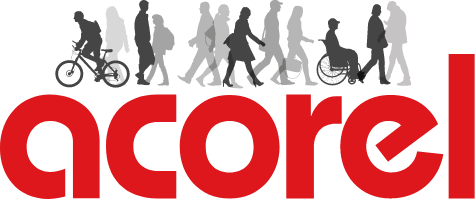In today’s rapidly evolving world, public transportation plays a pivotal role in urban mobility. However, the efficiency and reliability of public transport systems often leave commuters frustrated due to unforeseen delays and inconveniences. Enter Artificial Intelligence (AI), which is transforming the landscape of public transport by harnessing data projection and prediction to make transportation systems smarter, more efficient, and passenger-friendly.
Projection and prediction by AI in Transport: A Game Changer
Artificial Intelligence has been a catalyst for innovation across various industries, and public transport is no exception. By analyzing vast amounts of data collected from various sources, AI algorithms can make real-time predictions, improve scheduling, and enhance the overall public transport experience.
Data Collection and Analysis
One of the fundamental aspects of AI-driven public transport is data collection. Public transportation systems today are equipped with sensors, cameras, and GPS trackers that continuously generate data. This data includes information about vehicle location, passenger counts, weather conditions, and traffic congestion.
AI algorithms can process this data in real-time, allowing public transport operators to gain valuable insights into the performance of their systems. By identifying patterns and anomalies, AI can help operators make informed decisions to optimize routes, reduce delays, and enhance the passenger experience.
Predictive Maintenance
One of the most significant advantages of AI in public transport is predictive maintenance. Public transport vehicles are subject to wear and tear, and breakdowns can lead to service disruptions. AI can predict when maintenance is needed by analyzing data such as engine performance, mileage, and historical maintenance records. This proactive approach helps prevent unexpected breakdowns and reduces downtime, ultimately improving service reliability.

Real-Time Traffic Management
AI-powered traffic management systems are invaluable for public transport operators. These systems use data from various sources, including traffic cameras, GPS, and weather sensors, to predict traffic congestion and suggest alternative routes in real-time. This not only reduces delays but also minimizes fuel consumption and emissions, contributing to a greener and more sustainable transport system.
Passenger Information and Experience
For passengers, AI offers a more convenient and user-friendly experience. Mobile apps and digital signage at transit stops can provide real-time updates on bus or train arrival times. Passengers can plan their journeys more efficiently and reduce wait times.
Moreover, AI-driven chatbots and virtual assistants can provide passengers with information about routes, fares, and service disruptions. These AI-powered interfaces enhance the overall passenger experience by offering timely and accurate information.

Future Developments and Challenges
While AI has made significant strides in improving public transport, there are still challenges to overcome. Privacy concerns related to the collection and use of passenger data need to be addressed, and robust cybersecurity measures must be in place to protect sensitive information.
Additionally, the integration of AI systems into existing public transport infrastructure can be a complex and costly process. Operators must invest in both technology and training to fully realize the benefits of AI.
For more information click here
